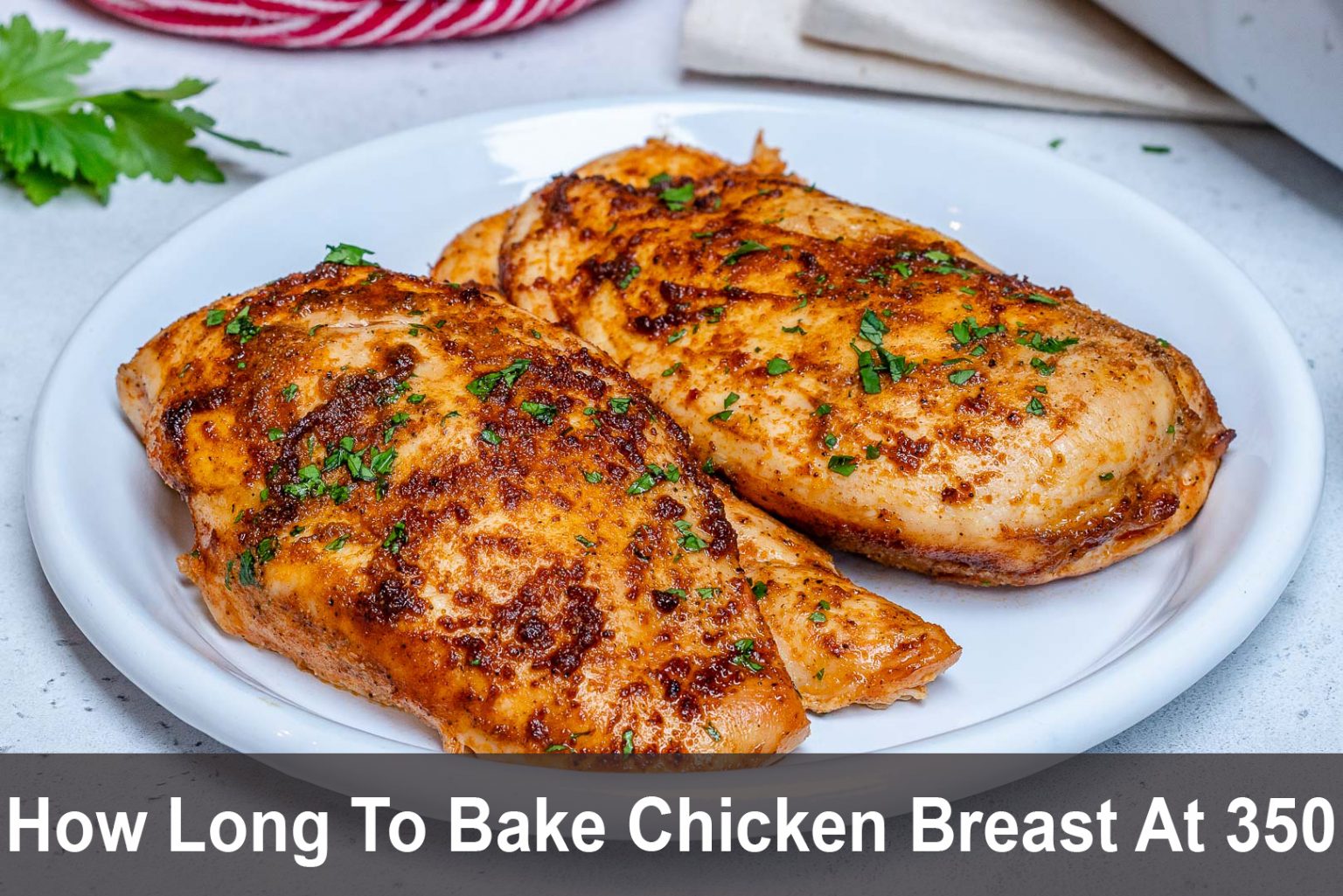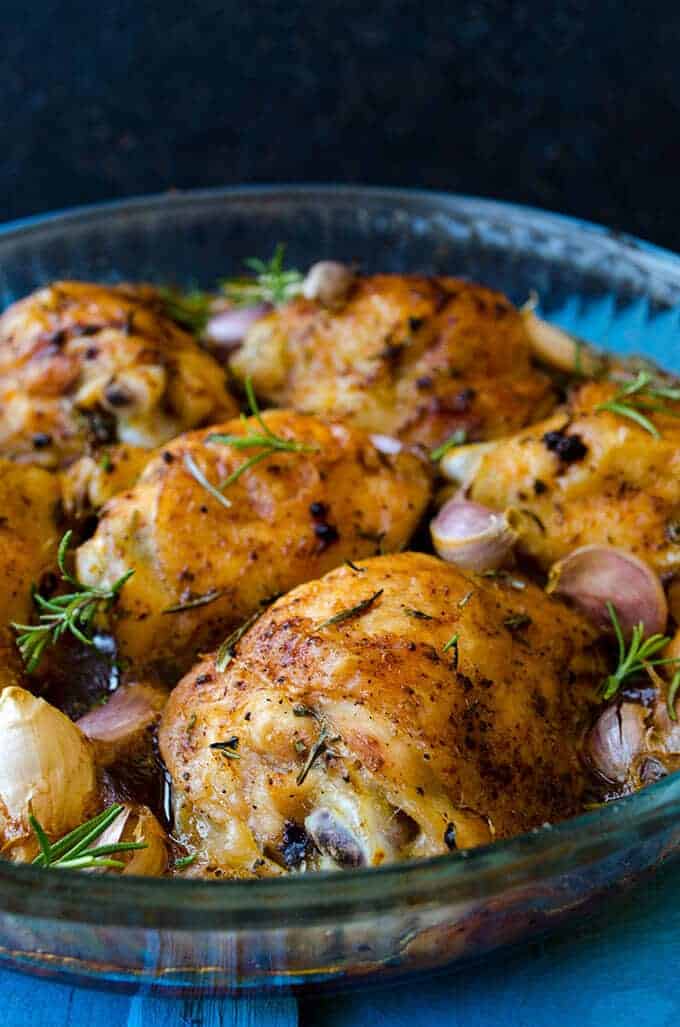Baking chicken parts like breasts, thighs, and drumsticks is a tasty and healthy way to prepare a quick weeknight dinner. The oven’s dry heat deliciously browns and crisps the skin while gently cooking the meat. Setting the oven to 350°F is a popular temperature for baking chicken parts. But how long should you bake them to ensure food safety while maximizing juiciness?
In this comprehensive guide, we’ll provide recommended baking times for various chicken parts at 350°F. We’ll also discuss factors that affect cook times, tips for preventing dry chicken, judging doneness, and troubleshooting common issues. With this information, you can confidently bake juicy, flavorful chicken every time.
Key Factors That Impact Chicken Baking Times
Several elements influence how long it takes chicken parts to bake at 350°F. Being aware of these factors allows you to better gauge the approximate cook times for your specific ingredients and oven
Type of Chicken Part
-
Boneless cuts like chicken breasts cook faster than bone-in pieces. Bones act as insulation, slowing down cooking.
-
Dark meat like thighs and drumsticks takes longer than white breast meat to become tender.
-
Smaller parts like wings bake quicker than larger pieces like a whole leg or thigh.
Thickness
Thicker cuts of chicken require more baking time than thin pieces of the same weight. Chicken part thickness can vary greatly.
Bone-In vs Boneless
Bone-in chicken needs more baking time than boneless pieces. Bones act as insulation, delaying cooking times.
Brined vs Unbrined
Brining chicken before baking infuses it with moisture and salt, which slightly speeds up cooking. Unbrined chicken may need a little longer in the oven.
Oven Calibration
Always verify your oven reaches and maintains the set temperature. Inaccurate ovens can significantly impact bake times.
Recommended Baking Times for Common Chicken Parts at 350°F
These time ranges for baking different chicken parts at 350°F are general guidelines. Several variables like part size and thickness will alter exact cook times. Rely on a meat thermometer for doneness.
- Boneless, skinless chicken breasts – 20-30 minutes
- Bone-in, skin-on chicken breasts – 30-40 minutes
- Chicken thighs (bone-in or boneless) – 30-45 minutes
- Chicken drumsticks – 35-50 minutes
- Chicken wings – 25-40 minutes
For safety, chicken should reach an internal temperature of 165°F as measured in the thickest part. White meat can dry out above 165°F, but dark meat thighs and legs are best when cooked to 175°F for ideal juiciness.
Tips for Baked Chicken That’s Juicy and Tender
Follow these tips for baked chicken parts with a tender, juicy interior and browned, crispy skin:
- Pat chicken dry before baking for crispy skin.
- Brine chicken in a saltwater solution before baking to boost moisture.
- Use a meat thermometer to determine accurate doneness.
- Allow chicken to rest 5-10 minutes before serving to retain juices.
- Bake chicken on a wire rack set inside a sheet pan to promote air circulation.
- Resist opening the oven, which can drop the temperature and extend cook times.
How to Tell When Chicken Parts Are Fully Baked
Using an instant-read thermometer is the most reliable way to assess baked chicken doneness. Insert into the thickest section without touching bone.
For safety, chicken should reach an internal temperature of 165°F. White meat dries out above 165°F, while dark meat can go to 175°F for ideal juiciness.
If you don’t have a thermometer, look for these visual signs of fully baked chicken:
- Meat is opaque throughout with no pink color
- Juices run clear when pierced with a fork
- Meat easily separates from the bone on bone-in pieces
Troubleshooting Common Baking Problems
Even when following recommended baking times, you may encounter issues like dry, pink, or undercooked chicken. Here are some troubleshooting tips:
Chicken is dry and overcooked:
- Use a thermometer and don’t overbake beyond 165°F
- Brine chicken before baking
- Tent foil over chicken to retain moisture
Chicken has pink or bloody juices:
- Return to oven and bake until thermometer reaches 165°F
- Allow chicken to rest sufficiently before cutting into it
Chicken is undercooked:
- Double check oven temp – Use thermometer to verify full 165°F temp
- Bake longer, checking often to avoid overbaking
Skin is pale and soggy:
- Pat chicken dry before baking
- Use a wire rack to allow air circulation
- Increase oven temp at end to crisp skin
Key Takeaways for Baking Chicken Parts at 350°F
- Boneless cuts bake faster than bone-in, and white meat cooks quicker than dark.
- Brining helps chicken retain moisture and can speed up baking time.
- Aim for an internal temp of 165°F for white meat, 175°F for dark to ensure safety and ideal texture.
- Prevent dry, overcooked chicken by pulling it from the oven at proper internal temp.
- Allow chicken to rest before serving so juices redistribute evenly.
Armed with this guide, you can confidently bake chicken parts to juicy, flavorful perfection every time. Enjoy delicious homemade dinners with chicken cooked just right at 350°F.

How Many Calories Are In Roasted Chicken Thighs?
In this particular recipe, I used thighs only that were not very large, about 50 grams. With bone in and skin on. Each thigh was 116 calories.
On the other hand, a skinless thigh provides about 105 calories.
How To Freeze Chicken Parts
To freeze chicken parts, place each of them in a freezer bag separately, not in blocks. Then put them in a larger freezer bag. This will help them thaw easier. Piling them altogether in one bag will require longer time to thaw.

Is it better to Bake chicken at 350 or 400?
FAQ
How long do different parts of chicken take to cook?
Roast at 200C/180C fan/gas 6 (whole chicken: 25 mins per 500g, plus an extra 25 mins; breasts, 15 mins; thighs and wings, 40 mins). Grill or barbecue (breast, 7-10 mins; cubes or strips, 5-7 mins; drumsticks and thighs, 25-30 mins; wings, 40 mins). Stir-fry (cubes or strips, 5-7 mins).
Is it better to bake chicken at 350 or 400?
Should baked chicken be covered or uncovered in the oven?
Whether to bake chicken covered or uncovered depends on your desired outcome. Covering chicken while baking helps it cook more evenly and retain moisture, potentially leading to a more tender result. However, it can also result in pale, steamed skin.
